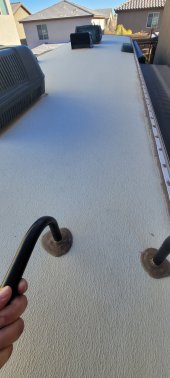12VoltInstalls
life passes by too quickly to not live in freedom
Depends. They ‘scan’ for density and an RV roof doesn’t lend itself as well to differentiating density. Too thin or too thick.you find the cross beams with a stud finder just like in a house?
Sometimes you can also ‘feel’ spacing by walking on the roof, sometimes gauging from the ceiling seams and fasteners can help you figure it out. Often you can pull vent trim or AC escutcheons, light fixtures or speakers inside the camper and see into the space.





